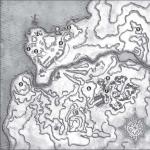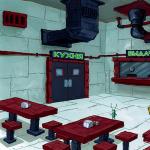Antiquity and neoclassicism: the tenement house on Bolshaya Ordynka is recognized as an architectural monument. Neoclassical style project Neoclassical house facades
“While working on this project, we not only reconstructed the house and designed the interiors, but also tried to create a kind of harmonious environment in general. For greater comfort, we increased the usable area both inside the house and outside. Also developed landscape design area with several areas for outdoor recreation.
In the design of the landscape, various conifers, differing in the number and length of needles, as well as in shape. They are interspersed with deciduous, fruit trees, ornamental shrubs, herbs and flowers
The house is located in the village of Millennium Park near Moscow. The building here is typical. The cottage, which was bought by the customers - a family with two children - was a bare box, inside - load-bearing partitions and ceilings, outside - a controversial decor on the facades and an empty lot.
The authors of the project, Yulia Mikhailova and Alexander Kutsenko, had to seriously work on engineering, functionality, appearance buildings and territory. There was a catastrophic lack of footage, so on the one hand, a block for a garage, an inventory room and a large dressing room was attached to the house, and a covered carport was equipped on the side of the main entrance in case the owners or guests want to leave the car on the street.

Armchair, Christopher Guy. Dinner table, chairs, Galimberti Nino
A separate building was built for the guests on the site. More usable area became inside. non-residential attic floor insulated, equipped with powerful waterproofing and turned into a spa area with a mini-pool, sauna, home cinema, wine cellar and small kitchen. The architects have known the customers for several years.

Sofas, Desiree. Table, Christopher Guy. Chandelier, sconce, Sylcom. Desk lamp, Marioni. The portal is made of a large slab of Rosso marble.
“We made an Art Deco apartment for this family,” Yulia says. - For the basis of the interior country house this time we took it, but in a lighter, more modern version: having lived in the apartment, the owners were a little tired of the too dense decor and wanted the usual style, but not so loaded.

Kitchen, table, Aster Cucine. Chairs, Cattelan Italia. Chandelier, Sylcom
Architects abandoned gold, complex combinations of textures and textures
The walls and ceilings are decorated with gypsum decor extremely delicately. Moldings, classic half-columns and diamond-shaped panels give relief to surfaces, creating a play of light and shadow. At the same time, due to the light shade of cocoa, the planes are not so active and act more as a neutral background for bright, expressive interior items.

The steps and railings of the stairs are made of Daino Reale light beige marble.
Deserves special attention. The architects set up a theme park on the site. The semantic center was a large functional, equipped summer kitchen with an open hearth, a fireplace and standing on the shore of a reservoir. The pond looks especially picturesque: aquatic plants in shallow water, boardwalks, slides with waterfalls and streams.
Externally, the pond is very similar to a natural reservoir, but in fact it is nothing more than a pool
A bowl is dug into the ground, equipped with a water purification system so that it does not stagnate and remains clean, unlike a conventional pond. Not far from the house is Japanese garden stones with bonsai composition and wooden deck for yoga, - continues Julia. - From prying eyes, it is hidden on one side by a pergola entwined with grapes, on the other - by a hawthorn hedge.

Weeping willow hanging over murmuring streams gives the garden a romantic mood.
In the center of the plot there is a lawn framed by a composition of the type English garden. Plants are selected so that flowering does not stop all season. Something has faded - another has blossomed. But the most important thing is color. Various shades burgundy, which dominate the interior, we also used in the landscape. Against the background of greenery, they look contrasting and spectacular, in autumn foliage is added to the flowers, and then the garden looks fantastic, immersed in crimson-golden tones.
Winckelmann stated: "The only way for us to become great and, if possible, even inimitable is to imitate the ancients."
NEOCLASSICISM (French Le style Neoclassique, German Neoklassizismus from Greek Neos - "new"; see Classicism) - the revival of the principles and creative method of Classicism after the formation of this artistic direction in the art of Italy at the beginning of the 16th century. (see Roman classicism), at the end of the 16th century. Main characteristic features neoclassicism are lightness, refinement and straightforwardness. The neoclassical pioneers were Robert Adam and John Soane, who, with an unusual approach, created architectural ensembles based on ancient Pompeii and Rome, bringing to them the lightness and grace revered by their contemporaries.
Neoclassicism by the rules. Style laws from designers:
Law 1. Neoclassicism is characterized by an appeal to antiquity, with its light, refined straight lines. Typical decorations are leaves, shells, architectural pediments.
Law 2. Refined forms of furniture are perfectly combined with delicate color solutions, thereby forming a very harmonious overall picture of the decor of the room.
Law 3. Neoclassicism does not tolerate overload with stylistic elements, but gravitates towards the minimalist simplicity of lines, seasoned with classical softness.
Law 4. The space in the interior of neoclassicism seems to flow from one to another: from the hallway or hall you can see the living room and beyond.
Law 5. Monochrome colors create a calming mood, pastel shades predominate, congestion with floral ornaments is unacceptable.
The neoclassical interiors at the Petit Trianon (Versailles) are a miniature fantasy world; it is symbolic that neither Versailles, nor Paris, nor villages can be seen from its windows. In ten minutes you can go around the palace, and yet it tiny space for Marie Antoinette is much more important than a whole kingdom with twenty million subjects. The building, located on a square platform, rests on a plinth, above it rises a floor and an attic, which ends with a balustrade that hides the roof in the Italian style. Due to the unevenness of the relief, the basement level is visible only from the side of the facade overlooking the Front Courtyard, as well as from the side of the Temple of Amur.
STYLE NEOCLASSICISM IN YOUR HOUSE.
1. It is advisable to place columns around the perimeter of the central room of your house (living room or hall) or mark the boundaries of space with friezes. The column sets the tone for the entire space. But don't get too carried away with the trappings of the classical era!

2. Neoclassicism is good because in this style you can build proportions yourself. Do almost everything minimalist interior with a hint of classics, or bring a hint of minimalism into the classic atmosphere of the room, indicated in individual interior items. The main thing here is peace and harmony!

3. Neoclassicism does not welcome the abundance of textiles in the interior. However, in one or two rooms, carpets with graphic pattern non-contrasting colors. Silk is suitable for bedspreads and curtains. Well, as an upholstery for upholstered furniture perfect fair skin.
The building is made in the neoclassical style, which is characterized by the features of ancient architecture - pilasters (overhead columns adjacent to the facade), bas-reliefs with expressive drawing of details, protruding bay window balconies and a pediment crowning the roof.
The residential building at the address: Bolshaya Ordynka street, 9/4, building 2 was recognized as an object of cultural heritage of regional significance. The building was built in 1915 by architect Capitol Doolin (1836-1933) as tenement house with comfortable apartments.
This building is a vivid example of an apartment building of the early twentieth century. in neoclassical style, which is characterized by features of ancient architecture. The most artistically decorated is the central part of the building, where the architect placed a colonnade of paired columns and pilasters of the Corinthian and Ionic orders, as well as relief compositions depicting ancient characters. The composition of the main facade is completed by the decoration of the sixth floor, which is also designed using elements of ancient architecture. A classic frieze (decorative horizontal ribbon) runs along the facade, and the vertical visual axes are continued by four decorative flowerpots.
“The main facade of the building faces the red line (development boundary. - approx.mos.ru) Chernigovsky Lane, but the house begins to be clearly visible already from Pyatnitskaya Street. This location formed the basis of the design concept of the architect. The author successfully used the prospect of opening a small Chernigovsky Lane from Pyatnitskaya Street and designed one of the turns of Chernigovsky Lane, building a six-story apartment building in its depths. The architect also gave the design of the facades of the building great importance, completing the appearance of the main facade in neo classical style, where the composition and proportions are balanced between static and movement, ”said the head.
layout interior spaces building on Bolshaya Ordynka is also original and once again confirms the mastery of the architect: when designing the house, he took into account small size plot of ownership and took the T-shape as the basis for the configuration of the building. This made it possible to place additional window openings in the apartments and avoid the close adjacency of the house to neighboring multi-storey properties.
According to Alexey Yemelyanov, today the building has an almost original appearance both from the outside and from the inside. In the interiors, the decorative decoration of the front and back stairs, the steps of which are lined with natural stone, and the design is represented by metal lattice marches with the rhythm of stylized harps, echoing antique façade motifs.
The status of an object of cultural heritage of regional importance ensures the protection of the state for the building of the apartment building on Bolshaya Ordynka. It is forbidden to demolish it, the historical appearance of the building also cannot be violated. Any repair or restoration work is carried out only under the control of the Moscow Department of Cultural Heritage and after agreement with it.
.jpg)
.jpg)
.jpg)
.jpg)
.jpg)
.jpg)
In June, the residential building of the Krasheninnikovs, built at the beginning of the 19th century on Kozhevnicheskaya Street, was recognized as an architectural monument. An object of cultural heritage of regional significance is.
Also recently, another ensemble of the city estate of the XVIII-XIX centuries has become an object of cultural heritage of regional significance, it is located in. The two-storey main building of the estate, the gatehouse and the stone fence with a gate are recognized as architectural monuments.
Built by him in 1910 on Bolshaya Sadovaya street, 4, p. 1. This was the last, third house that he built for himself and, perhaps, one of the most perfect creations of the architect in the classical style. Shekhtel built the previous mansion for his family in Ermolaevsky Lane in 1896 in the pseudo-Gothic style that was in vogue at that time. In 1910, the time for other styles came, and he built a house in the neoclassical style. The result was an ensemble of two houses - along the red line, the owner's residential building, and in the courtyard there was a two-story residential building. Initially, a workshop was designed in the yard with big window, but circumstances forced the architect instead of her to make a residential building with two 4 room apartments on the first and second floors. Together with the family of the architect, the sister of his wife, an employee of the Rumyantsev Museum, Vera Timofeevna Zhegina, and their niece, artist Vera Alexandrovna Popova, began to live.
The facade of the house consists of two parts: on the left - a one-story volume with a passage arch and a two-story right part, asymmetric in composition. Facade decor - a hymn to the Moscow Empire early XIX century. The right side of the two-story volume is decorated with a solemn portico of four attached half-columns of the Doric order, between them there is a large three-part portico window with an elegant devitrification. This window and the living room-hall behind it are the center of the composition of the facade and the entire building, a kind of temple of art. The idea of the eternal and absolute significance of art is stated not only in the composition, but also in the frieze with ancient figures, which is located above the arch. It is very reminiscent of the frieze of the Panathenian processions of the famous Parthenon temple on the Acropolis. In the center of the composition, made according to the drawing by F.O. Schechtel Pallas Athena. Muses of painting, sculpture, music and architecture march to it on both sides. The whole composition reminds us of the strict majesty of post-fire Moscow. The static facade is opposed by the dynamics of the internal composition. It is built around a gigantic, two-story hall-living room, where exhibitions of the work of the architect's children were often held. The walls here also hung the work of his artist friends. The living quarters overlooked the courtyard, which was adjacent to the courtyard of the building of the Moscow Architectural Society, headed by Shekhtel.
In this mansion, the Shekhtels often visited their friends, artists, writers and merchants. Vladimir Mayakovsky was friends with his son Leo and daughter Vera. Here they prepared the first collection of his poems "I", illustrations for which were made by Lev Zhegin and his friend Vasily Chekrygin, who also lived here in the Shekhtel family. This book was unique because it was made by handicraft and not by typography.
In 1918, the house on Bolshaya Sadovaya was nationalized, the architect and his family were evicted. Over the past eight years of his life, Shekhtel has changed three addresses. The revolution robbed him of everything. After 1917, he no longer built anything. The young republic did not need the skill of a great architect. Shekhtel was seriously ill, huddled with his wife and eldest daughter in the apartment of his daughter Vera on Malaya Dmitrovka, and died of stomach cancer on July 7, 1926.
After the revolution, a prominent military, public and statesman Robert Petrovich Eideman lived in the house. In the courtyard wing in the mid-1930s there was a workshop of the sculptor I.D. Shadra.
Homeless people lived in the house in the 1990s. They stoked the fireplace with the remains of unique furniture and wooden paneling walls. The interiors of the mansion were restored by the Strategy Foundation, which has owned the house since 1993.
Those who do not want to see archaic museum halls in their house. Neoclassicism is luxury, comfort, grace and elegance in the spirit of modern times. Let's try to figure out together how to properly decorate the interior in the neoclassical style, while avoiding classic mistakes.
Advice!When creating a neoclassical interior, be sure to carefully consider every little thing. In this style, any, even small mistakes will be very noticeable.
This style looks especially chic in country, spacious houses and large suites with high ceilings. Neoclassicism requires an abundance of free space and space. But it can also be used in ordinary apartment(with minor changes).
Interiors in neoclassicism: neoclassicism - what is it?
A harmonious composition of rectilinear, symmetrical, clear forms, nobility and austerity of furnishings, expensive but not pretentious decor - this will be the interior in the neoclassical style. There will be no place for defiant textures and rich splendor. Neoclassicism requires the unity of space, its smooth "flow" from room to room.
Neoclassical interior - from A to Z
♦ Aesthetics of the walls. To visually increase the space, neoclassicism in the interior requires the use of pastel, light colors ( blue,beige, gold, sand, pink).
- Top of the wall. Any would be ideal. wallpaper for painting , or plain, with a classic pattern. Nobility will give wallpaper with a wide stripe.
- Lower zone. Here it would be appropriate to use modern materials with imitation of wood, decoration with plaster, or wallpapering in more saturated, dark tones, are possible floral motifs on wallpaper
Neoclassic says "no" to the standard, narrow plinth. Only tall. This original performance will give more luxury and sophistication of the room.
Advice! For decorative elements polyurethane is ideal. From the same material, decorate the ceiling border. Quality and taste.
♦ The nobility of the ceiling. We use soft White color. For decor and decoration, take wood-like decorative panels, divided into rectangular elements. In neoclassicism, you can use modern design ceilings (stretch with a glossy or matte surface).
♦ The modernity of the floor. The best option– natural wooden parquet. If desired, you can take a laminate, parquet board or ceramic tiles imitating parquet. The respectable Merbau parquet looks prestigious and rich. natural wood fills the room with warm comfort. Take valuable species (rosewood, ebony or mahogany, oak). A neoclassical floor must look like a small work of art. Quite often in neoclassicism as floor covering carpet of luxurious colors is used.
Advice! Forget about the once beloved linoleum or carpet. Better give it to your friends. Neoclassicism does not accept this flooring.
Interior and furnishings
Interior design in the neoclassical style accepts any architectural techniques (pilasters, cornices, wall niches). It is obligatory to use precious metals (bronze, copper and gold), genuine leather. In furniture and accessories, a strict style is emphasized by various forged elements.
Lighting. Diffused, soft and matte light. This is how you can perfectly emphasize the beauty of the decoration of rooms and the nuances of design. Best chandeliers in this style - crystal and heavy, with numerous small details. Additionally, you can use built-in or pendant lamps located at different heights.
Advice! Pick up lamps in pastel color scheme. Cream shades and eggshell colors are perfect.
Wealth of curtains. For curtains, it is better to take dense, expensive silk fabrics. They are sewn strictly according to classic patterns. Accent detail - lambrequin semi-circular shape, in harmony with the jabot and draped pleats. The cornice is necessarily decorated with carvings.





